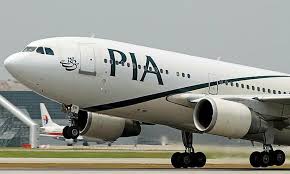Pakistan International Airlines (PIA) recorded a net loss of Rs. 4.6 billion in 2023, despite a reported accounting profit of Rs. 26 billion, according to the Finance Ministry’s latest State-Owned Enterprises (SOE) report, released on July 13, 2025. The profit stemmed from a one-off, non-cash deferred tax asset (DTA) adjustment, masking ongoing operational challenges that continue to threaten the airline’s solvency.
Financial Breakdown and Restructuring
The Rs. 26 billion profit was driven by a Rs. 30 billion DTA, which reflects anticipated future taxable profits rather than actual cash flow, as clarified by the Finance Ministry. Stripping away this adjustment, PIA posted a pre-tax loss of Rs. 4.58 billion. High operational costs, totaling Rs. 106.6 billion—including Rs. 8.3 billion in administrative expenses and Rs. 8.2 billion in distribution costs—along with Rs. 2.3 billion in exchange losses from unhedged currency exposure, weighed heavily on the airline’s finances.
A major restructuring in 2023 transferred Rs. 660 billion in legacy debt and non-core assets to a new holding company, slashing PIA’s long-term liabilities from Rs. 295 billion to Rs. 13 billion and finance costs from Rs. 79 billion to Rs. 10 billion. Total assets now stand at Rs. 187 billion, with current liabilities reduced from Rs. 482 billion to Rs. 142 billion and non-current liabilities from Rs. 366 billion to Rs. 41 billion, per Dawn (https://www.dawn.com/news/1845123/pia-losses-2023-report).
Challenges and Recommendations
Despite the debt restructuring, PIA faces persistent solvency risks. The SOE report urges urgent reforms, including fleet modernization, fuel hedging to mitigate currency risks, renegotiating supplier contracts, and adopting performance-based HR policies. X posts highlight public frustration, with users like @PK_Aviation noting, “PIA’s losses show why privatization is overdue” (July 13, 2025). The airline’s aging fleet and high fuel costs, exacerbated by global oil price volatility, remain critical hurdles.
Context and Global Relevance
PIA’s struggles reflect broader challenges in the global aviation industry, where carriers face rising costs and competition. In Pakistan, where initiatives like the “No-Bird Zones” around Lahore Airport aim to enhance flight safety, PIA’s operational recovery is vital for maintaining its role as a national carrier. Newsera: Punjab’s No-Bird Zones The country’s $500M+ freelancing economy and AI-driven tech growth underscore the need for a robust aviation sector to support global connectivity. Newsera: Pakistan’s AI Training Push
What’s Next
The Finance Ministry warns that without operational improvements, PIA risks further financial strain. Plans for privatization, under discussion since 2024, aim to attract investors by streamlining operations, with Emirates and Etihad reportedly interested, per The News International. Upcoming reforms include leasing fuel-efficient aircraft and expanding routes to Europe, recently reinstated after a four-year EU ban lifted in June 2025.
PIA’s path to recovery hinges on balancing cost-cutting with strategic investments. As Pakistan pushes for economic and digital growth, a revitalized national airline could bolster its global standing.
Stay connected with Newsera for the latest on aviation, tech, and global news!






